If you want to bless something and curse it at the same time, make a successful motion picture about it. Director George Lucas did that in 1973 with his first big hit: American Graffiti, about Saturday night cruising on the streets of Modesto, California in 1962. The shock waves still reverberate, fifty years later.
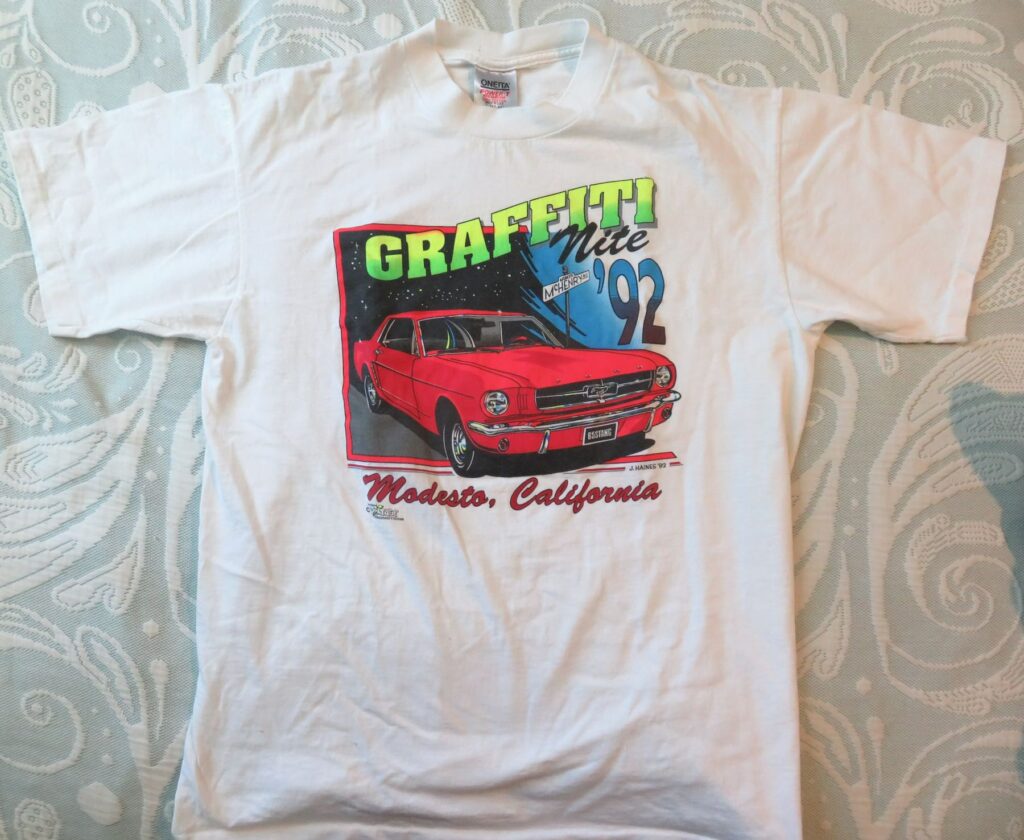
At the time, Modesto was a fast-growing farm town of 30-odd thousand in the San Joaquin Valley: surrounded by hot flat agricultural land with nothing to interest restless young teens. So on Friday and Saturday nights the high school-age studs of Modesto, a couple of hundred cars’ worth, would slowly cruise 10th and 11th Streets downtown. Smaller valley towns had the same scene going on their own main drags.
That said, Modesto was a little special. My parents lived nearby and visited it as kids and teenagers in the ‘30s and ’40s. Back then the town only had 15 or 20,000 people; but like some other farm centers, it punched above its weight.
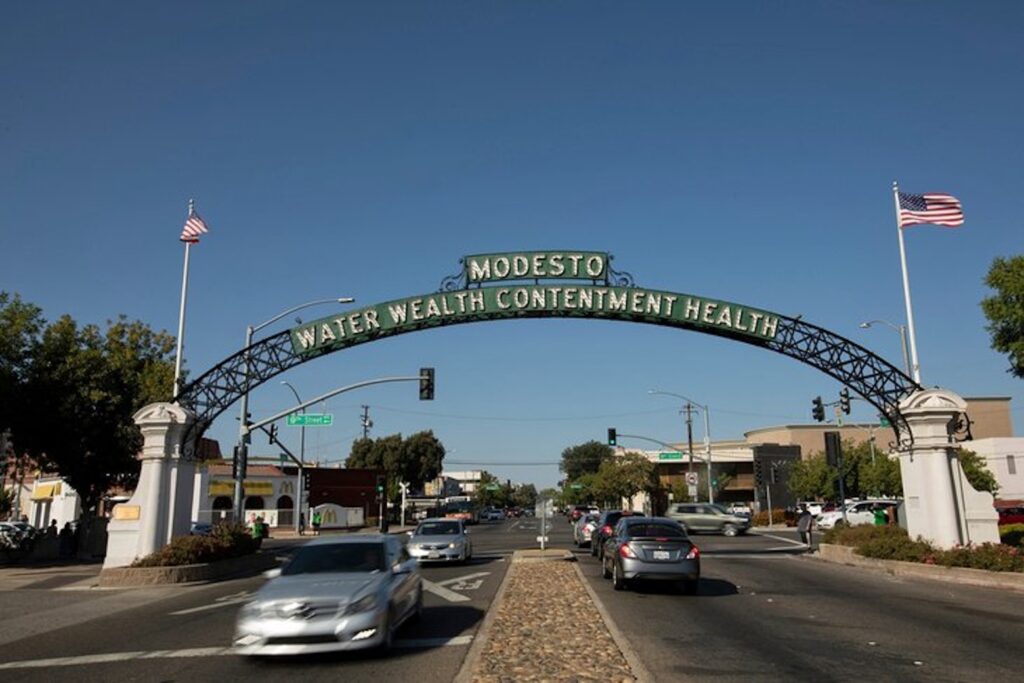
Farm families from miles around poured into Modesto every Saturday to sell produce and meat and livestock, and buy — well, just about everything. It was market day, and downtown bulged at the seams. The restaurants and bars and soda shops were full to bursting; people lined up at the movie theaters and crowded the aisles of shops and stores in search of clothing, tools, tractor parts, toys, yardage, linens, soaps and medicines, reading material, records, radios, rifles and any damned thing. They had one day a week to sell and buy, and Modesto took ‘em all on. You should have seen it, my mom said once, or you wouldn’t believe it.
That was 25 or 30 years before high-school age George Lucas went cruising on Tenth Street in a bigger, more suburban Modesto, but not everything had changed. Even in the ‘80s, when my parents retired to Modesto, the irrigation district provided the city water: flat rate, no meters, use all you want. If you had yard waste you dumped it in the street like any agriculturalist and somebody came by and picked it up.
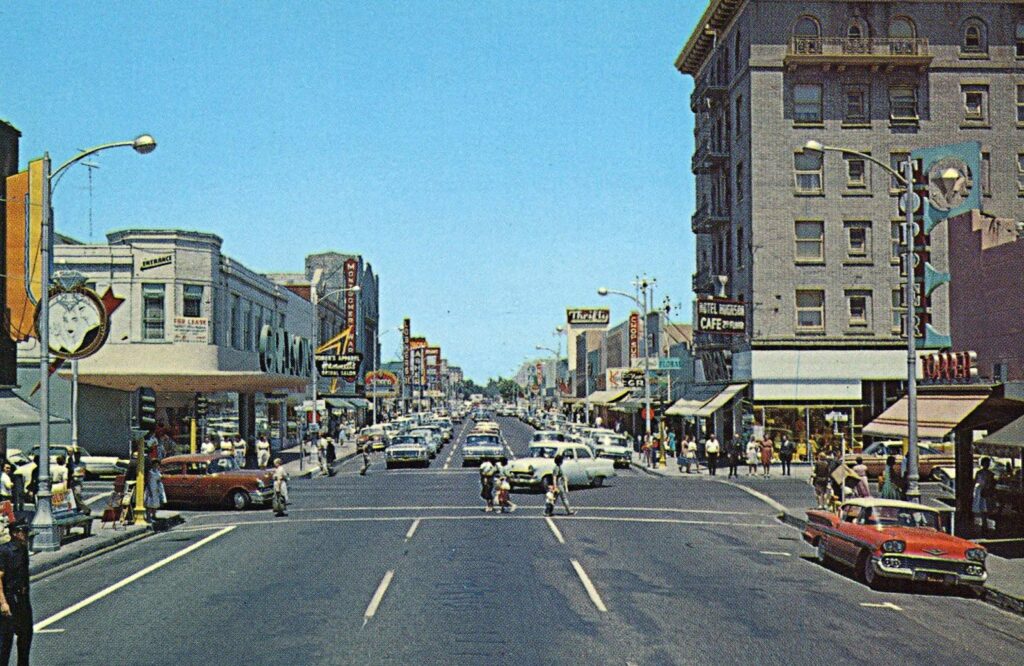
So in Lucas’ day a growing Modesto still wore small-town shoes. Every teenager out there on cruise night knew everybody else or at least had a vague idea of who they were. Or could find out easily. And the times were prosperous, and kids had cars to cruise in even if they were old models that they’d rodded up themselves.
Cruise nights were a place for Modesto high school kids to hang out, to show off their rides, and especially to meet the opposite sex: Girls would get out into the cruise to check out the boyflesh. If a boy flashed his lights at a girl — the agreed-upon mating call — she just might leave the.car she was riding in and jump into his. Later on, if things went well, they might stop at a drive-in together.
And if the boy seemed unsuitable, the girl had the right to pretend that he didn’t exist. But the cars kept cruising slowly along, and there was always another chance. The cruise route downtown was a closed loop: down one-way Tenth Street for a long block, over a block to Eleventh on a cross street, back up one-way Eleventh Street in the opposite direction, then over a block to the top of Tenth. An endless procession of cars and meaningful glances and flashing headlights rolled on and on till into the wee hours.
It was a weekly open-air prom with slow cars instead of slow dancing. Though there was always the radio. And yes, the rock ‘n roll sound of the top-40 stations boomed all night from tinny AM car radio speakers. By today’s standards, it was very small-town and almost respectable.
By 1973, when “American Graffiti” hit the theaters, Modesto had doubled in size from Lucas’ cruising days. As far as Lucas was concerned, cruising as he remembered it — a small-town rock ’n roll mating ritual — was gone.
For one thing, cruising had been moved from the cozy old downtown out to McHenry Avenue on the East Side. McHenry ran through a spread-out neighborhood of shopping centers and giant parking lots.
For the kids, Friday- and Saturday-night cruises were no longer the be-all and end-all of a small, comfortable, homogenous community. High school was no longer care-free, nor their futures neither secure nor set in stone. There were grades to get, and college to worry about, and a more unsteady and extreme world beyond the city limits. This New York Times article from the early ‘70s captures the change in young Modesto’s zeitgeist.
Yet the fame on Modesto’s weekly cruise only grew. More and more cruisers would come from out of town, especially as other valley towns shut down their own cruising nights because of vandalism and crime and even drugs. These problems would rise at the Modesto cruise at well.
At the same time, Modesto boosters worked to keep the Graffiti spirit — and revenue — alive downtown by launching a special Graffiti Nite Cruise on the first Saturday night after school let out in June. It was for teens but it was also something of a nostalgia event for Original Cruisers and other car buffs and cruisers of all ages; it was held on Tenth Street, the original cruising route. Increasing popularity drove it out to McHenry as well before long.
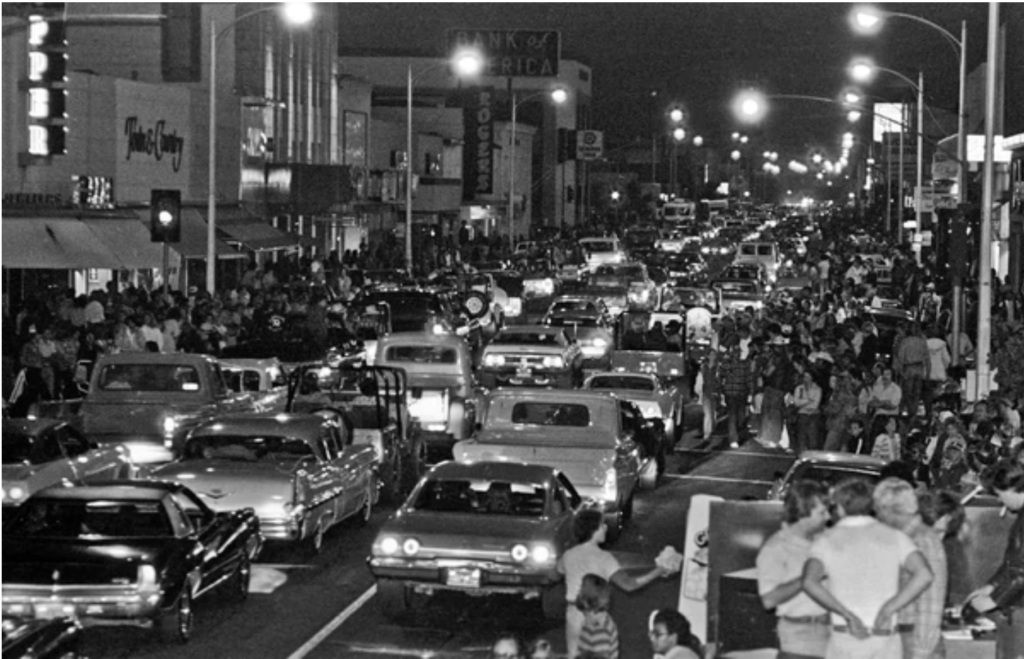
By 1990 the weekend McHenry Avenue cruises were drawing up to 5,000 people; the annual Graffiti Night celebration had been drawing as many as 60,000. The street is long, but not that long. McHenry area residents were tired of their neighborhood being invaded by cruisers who blocked access to businesses and homes alike. Modesto was a large city by then; this just didn’t work.
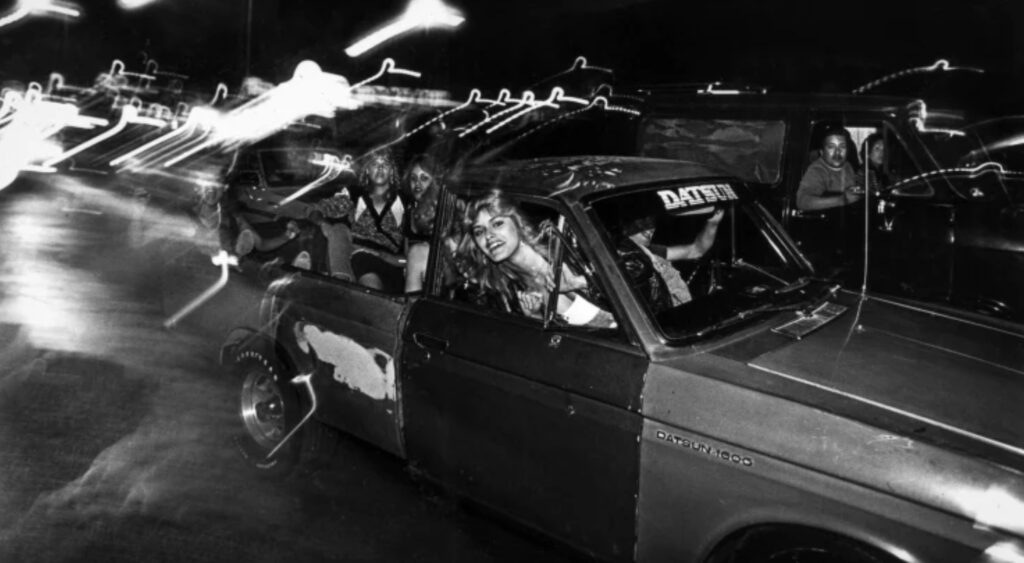
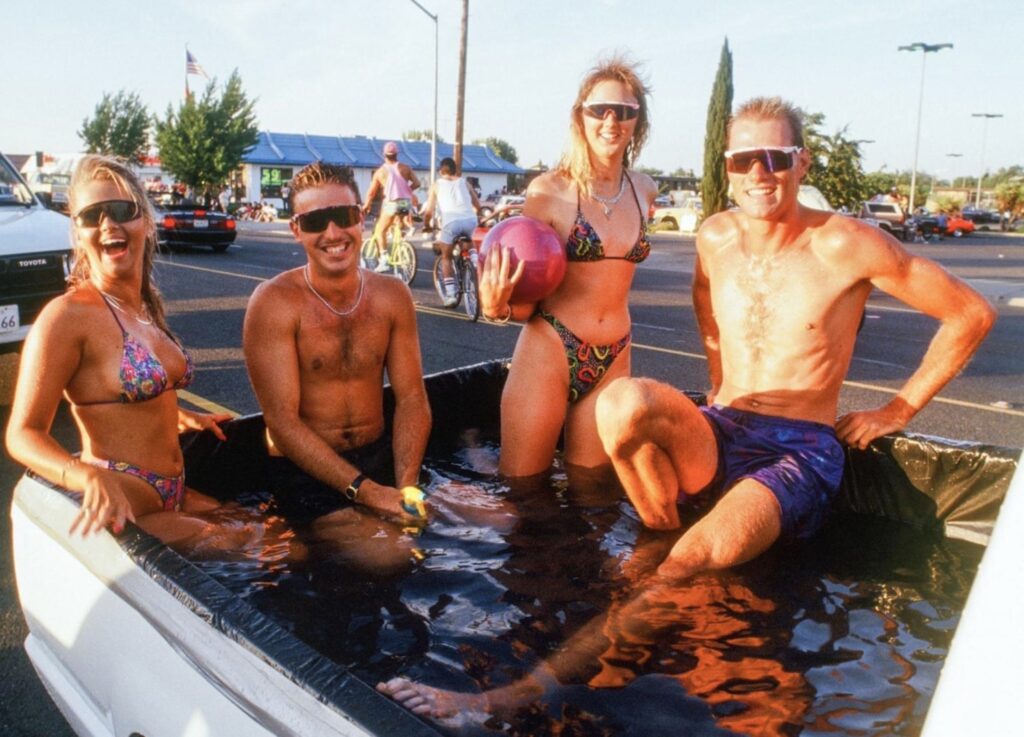
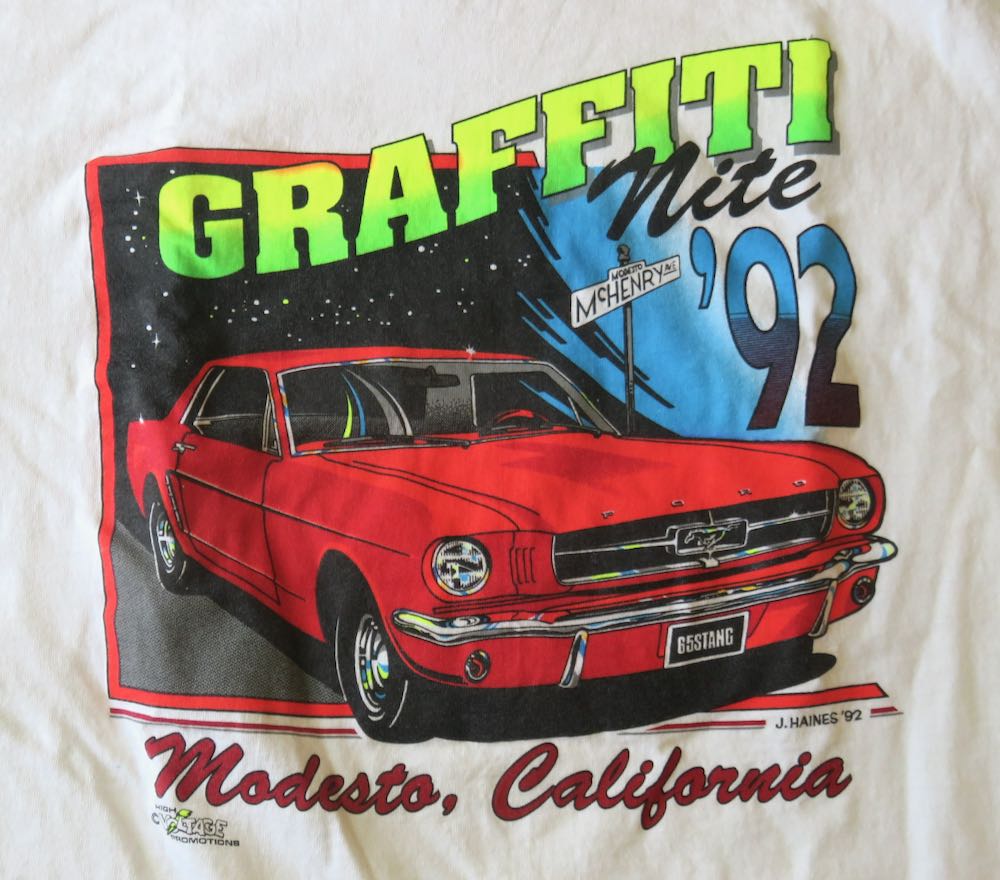
In 1990 the city council ended weekend cruising on McHenry for good. Two years later, the Graffiti Nite festival ended as well. The tee I’m showing here is for the very last year.
Modesto still fields summer American Graffiti-themed events including classic car street parades, but they are regimented and organized “classic car” events; there’s even a Graffiti Museum. Modesto’s never going to let go of the “Graffiti” brand, though the memory grows dimmer.
But beyond that many locals have cut to the chase and rebranded Modesto as the cruising capital of the United States. You just don’t do it at five miles an hour anymore.
They were cruising in ’62 and they cruise today: just differently. Big boulevards, a strong car culture, warm nights half the year, and not much else to do: cruising’s huge in Modesto. Though people like my mom still thought it was a hotter town on those long-ago Saturdays back in the ’30s.
There’s still a lot of traffic on McHenry on Friday night, last time I looked; fast and heavy, but it’s there. Hey, Netflix sucks tonight; let’s hop in the truck and see what’s happening.
